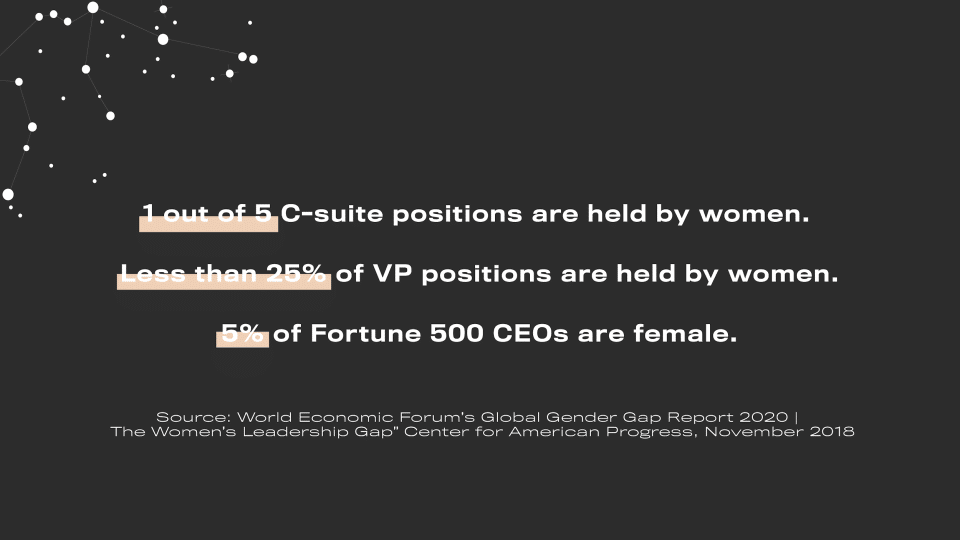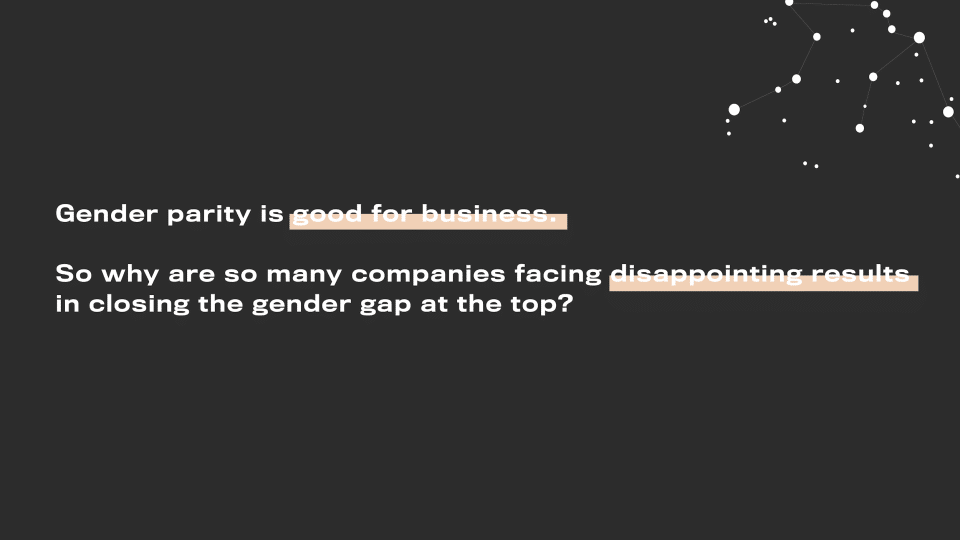Gender inclusion trends in 2020. How far have we moved?

Insights & practical steps to increase gender inclusion in the workplace.
By Patrycja Riera, CEO & Founder, Inclusionem .
For those leading in post Covid-19 era, apart from experiencing the greatest business transformation test, developing gender inclusion in a crisis context adds to the set of challenges that need to be tackled.
Now more than ever, it is very clear that companies who foster inclusive environments are more likely to emerge from the crisis stronger.
So, what else can be done to move the needle further?
A slow progress overall. A stronger business case for diversity.
Latest studies show that there is still a strong business case for gender inclusion in business leadership. The findings are underpinned by data from 15 countries and more than 1,000 large companies.
Data since 2014 outlines how diverse companies are more likely than ever to outperform non-diverse companies on profitability.
Companies in the top quartile of gender diversity on executive teams were 25% more likely to experience above average profitability than similar companies in the 4th quartile. This number has gone up by 21% since 2017.
The end result shows 48% performance difference between companies with most and least gender diverse firms.
This should make gender diversity a pillar of any strategic growth plan.
Connection between gender balance on boards & business performance
“Gender balance on boards and in senior management not only encourages better leadership and governance, but diversity further contributes to better all-round board performance. It ultimately increased corporate performance for both companies and their shareholders.” 30% Club
There’s been progress on reaching gender diversity on both executive level and in board rooms, however, it is a slow one.
According to PWC, 84% of directors believe that diversity improves the overall board performance.

We know that women hold just 24% of S&P 500 board seats, and the number increased by 3% since 2012, notwithstanding the fact that women hold anything from 40% to 49% of workforce, depending on geographical location.
Despite the overall acceptance that diversity brings benefits, “diversity fatigue” exists and impacts everyday decisions of boards.
52% of the directors of the PWC survey believe diversity efforts are motivated by political correctness.
So, where do we go from here?
Some firms, though, made remarkable developments and helped to increase the number.
Globally, numbers varies profoundly depending on industries, region and sometimes from country to country.
As of now, it will take 29 for a US/ UK company to reach gender equality on executive teams but 238 years in Brazil to reach the same results.
Gender representation on executive teams is strong in countries such as Norway, Australia or Sweden while almost non existing in Brazil, Germany or Japan where female representation averages 8% or less.
The first question is, where do we want to see the shift? Is it on an executive level or board level?
And then take bold and strategic actions .
Adding diversity is not enough. Strengthening inclusion is often more effective.
5 steps to growing a culture of inclusion

- Increase gender representation, specifically in leadership
Focus on line management, technical and board roles. Measure with appropriate targets your hiring, appointments and succession planning.
- Strengthen leadership and accountability for delivering on I&D goals
Build inclusive leadership capability and accountability. Roll out on every organizational level and go above unconscious bias training. This needs to be part of the performance review and leader’s capability assessment.
- Enable equality of opportunity through fairness & transparency
All your HR processes must be transparent so employees can see that they are hired and promoted on skill and potential ONLY. This is key to a successful talent acquisition and retention.
- Promote openness, tackling bias and discrimination
Create a zero-tolerance policy for discriminatory behaviors. Ensure there is congruence between policies, actions to support victims and apply consequences to the perpetrators.
- Foster belonging: being heard, seen and understood
Create a culture where employees feel that they can contribute with their unique talents, and those are valued by the managers, their team and wider organization.
You want to see a shift on the board level? Rethink these.
- One is not enough
Adding one woman and expecting a change won’t shift much. You need at least three female directors to shift the decision-making process.
- Director criteria
Revisit your hiring criteria and design a wider net and focus on skills and experience rather than titles candidates have held.
- Expand the size of the board
The low turnover of board seats is probably the number one challenge to create greater diversity. Expand the number, at least until some leave and you have a smaller board with a more diverse background.
- Require a 50–50 slate
Companies seeking greater board gender inclusion should be more intentional in considering only slates of women until parity is achieved.

Your starting point may differ, but you can act now
Ensure first that you appoint diversity leaders who truly care about growing an inclusive organization, support it with a solid business case and are courageous enough to do so. As any other business led decision, companies when decided, can easily find internal leadership and external industry experts to work on this challenge.
SOURCES
- https://www.mckinsey.com/~/media/mckinsey/featured%20insights/diversity%20and%20inclusion/diversity%20wins%20how%20inclusion%20matters/diversity-wins-how-inclusion-matters-vf.ashx
- https://30percentclub.org/about/who-we-are
- https://www.pwc.com/us/en/services/governance-insights-center/library/annual-corporate-directors-survey.html
- McKinsey 2015 report Women in the Workplace report stated that companies in the United States were 100 years away from gender parity in the C-suite, based on progress in female representation between 2012 and 2015. While this progress has accelerated over the 2014–19 time period, it should also note that the current report draws on a different data set of companies, so its findings are not strictly comparable with those of Women in the Workplace.
#weallareeve
